
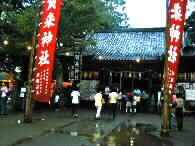
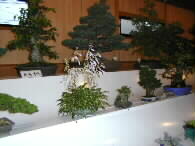
The street is crowded with families or groups carrying umbrellas with them. Kaku shrine is located in ten minutes distance by car from my home. Usually quiet precinct is filled with so many stalls including Bonsai display like this. The Bonsai are the works by the local residents, they say. A beautiful work of pine attracts attention.

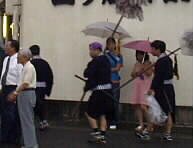
A small post office in the district celebrates the festival as well by attaching papers on the window that read "congratulations!" (left.) Surprizingly, a couple of people time-slipped from Edo era (right.) Yes, we will have a Daimyo's Procession this evening. Kaku shrine is located in the western suburbs of Oita city, at the junction of Oita river and Kaku river. Famous "Kaku Fair" is held annuary in September. Once in every six years, a special event called "The Shinto ritual of the year of 'The Hare and the Cock'", including "Daimyo's procession of Kaku" is held in the shrine.
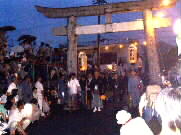
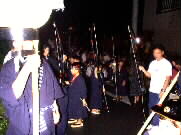
The origine of the festival dates back to remote Heian era. After the Meiji Restoration in 1867, the tools and costumes for the procession were contributed from then local feudal lord of Funai to the shrine. The festival begins on September 1 through 11 this year (usually until 7th.) The procession is held three times during the term, on the first day, 5th (middle day), and the last day. Today's procession starts from the first Torii gate of the shrine.
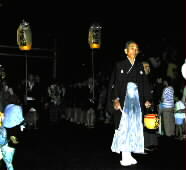
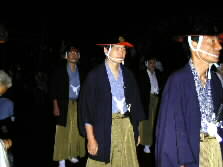
The general representative of the festival leads the procession. Each group's processions follow the high-hoisted lanterns on which the name of the group is proudly painted. Wach group's representatives wear formal dresse of summer Haori (short coat) and Hakama (skirt), and a Jingasa cap on their head.
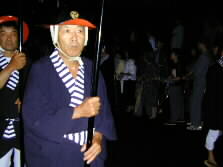
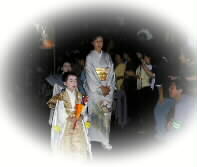
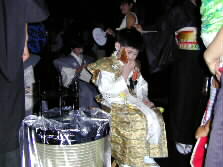
Great shouts of joy arose from the crowd when a Daimyo came in sight. A lovely boy, a star of the procession, is make-upped and dressed up in a traditional glitter Kimono, holding a scarlet fan in his hand. His beautiful mother in a wonderful Kimono costume acts as guardian. The procession takes rest after a short walk in a hot humid evening air. Sitting on a portable chair relieves the star wearing a heavy costume.
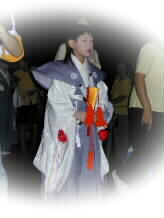
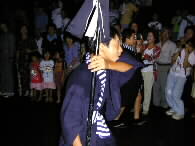
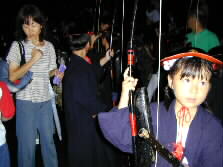
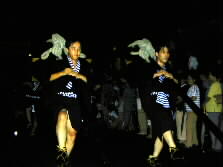
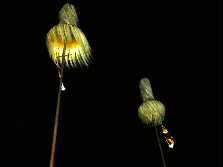
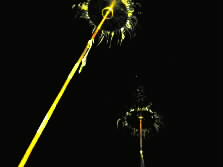
The top covers of the spear dance in the air, high and low, spinning right and left. The spears are also handed over to the next holders on the way of the procession: a heavy spear is hauled high in the air toward the receiver with a big shout. When the receiver catches the spear smartly, a storm of applause surges from the spectators.
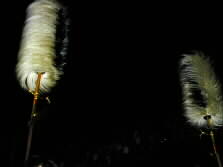
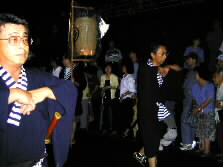
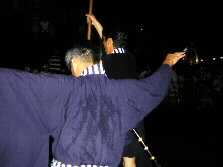
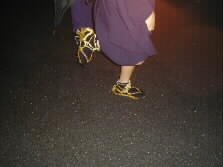
Soaked with sweat on his back and face, footman marches patiently (left.) The kid steps skillfully with a pair of straw sandals. Kids hold a spear, a gun, or a bow in their hands. One of the most popular performance is the kid in charge hauls a small umbrella over the high Torii gate, then he passes quickly under the gate to catch the falling umbrella.
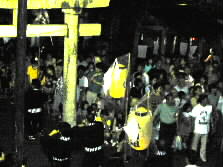
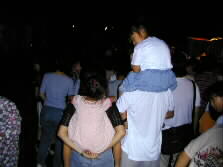
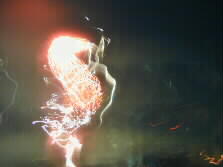
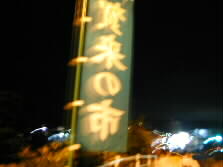
Soon a firework broke out on the riverbed of Oita river. Brilliant chrysanthemum flowers sparkles and flows in the night sky. Spectators cheered the beautiful art of fire. The streets of Kaku were crowded late in the night wrapped with light and cheers with fluttering banner that reads "Kaku festival." I hope I can visit the festival again after six years.

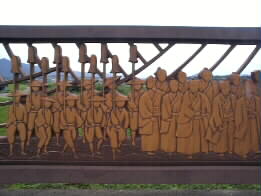
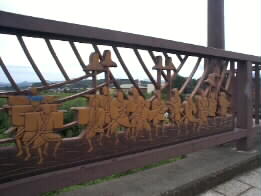
On the parapet of the bridge are some sculptures, telling us the detail of the Daimyo Procession. We frequently cross the bridge. From now on, we will remember today's special event of lovely Daimyo and kid footmen who hauled and caught the umbrella skillfully whenever we drive over the bridge.